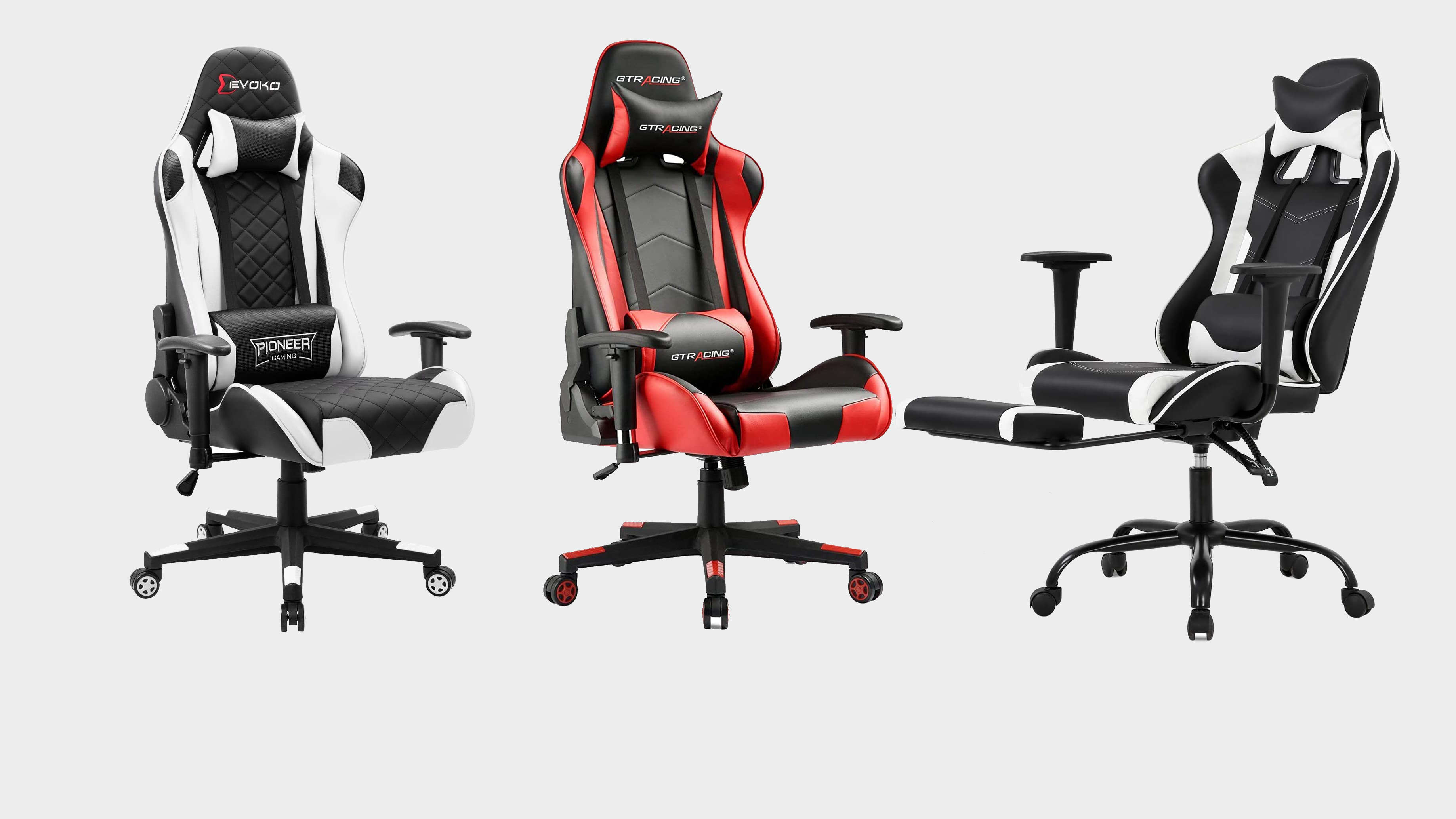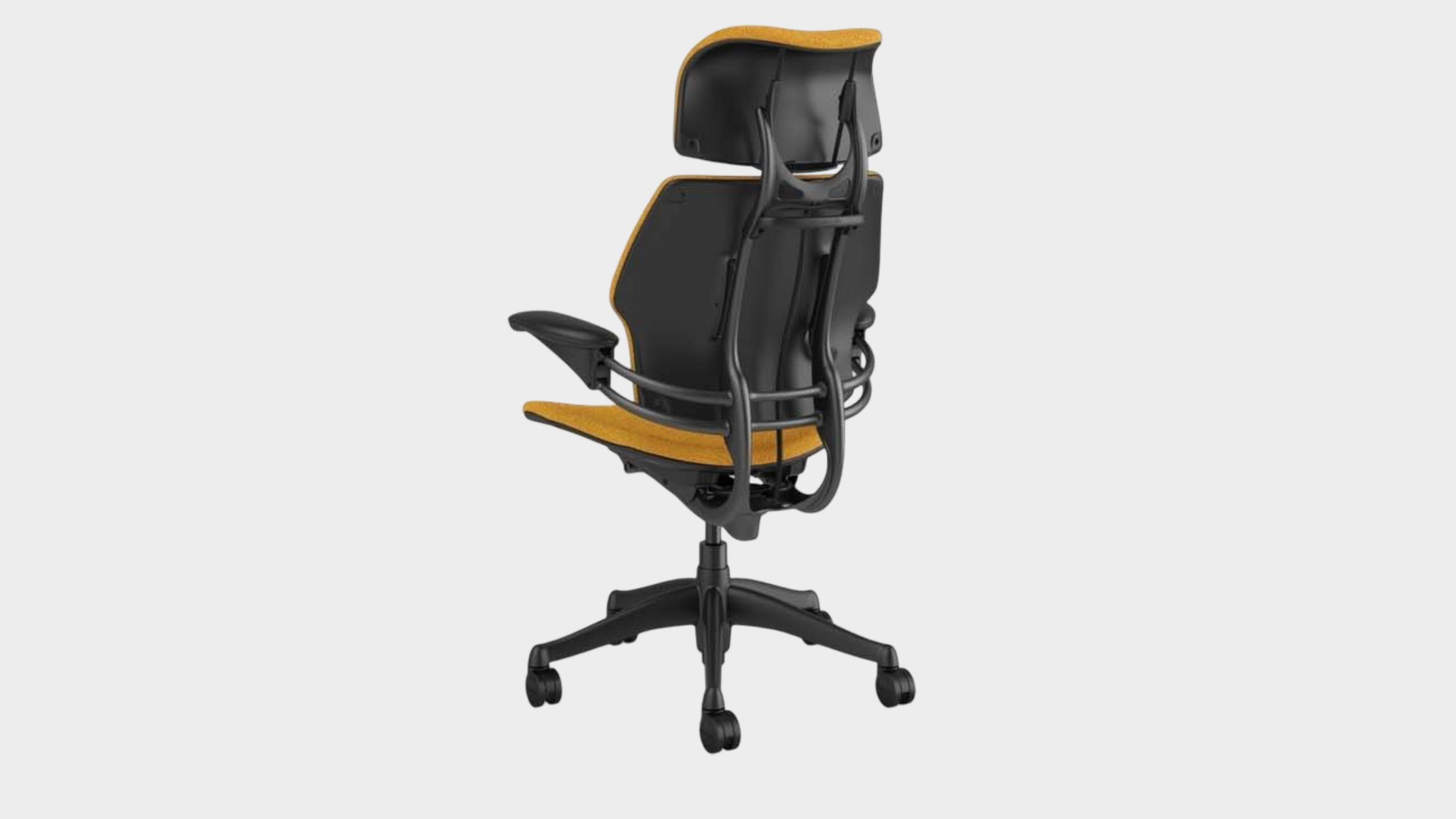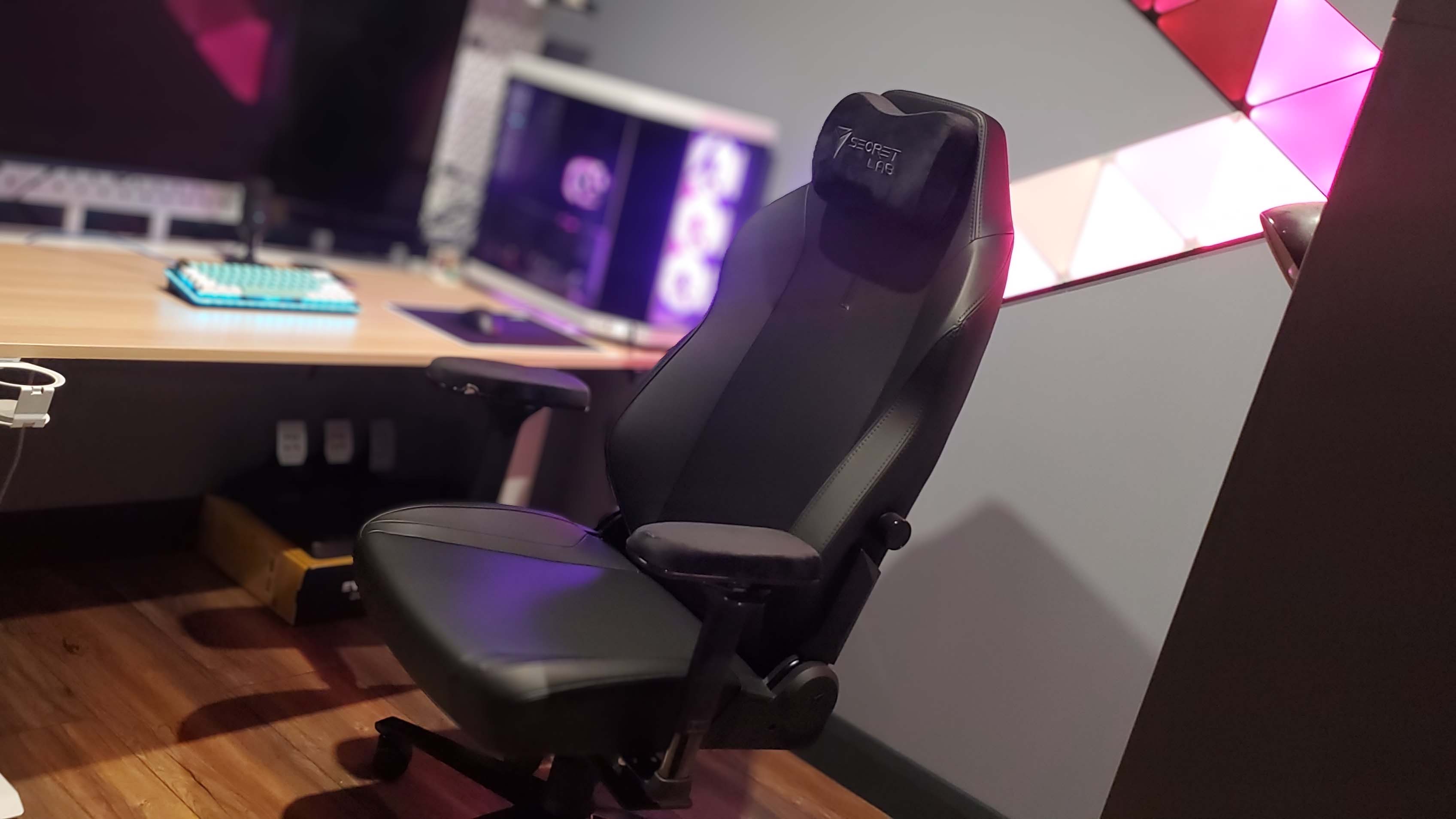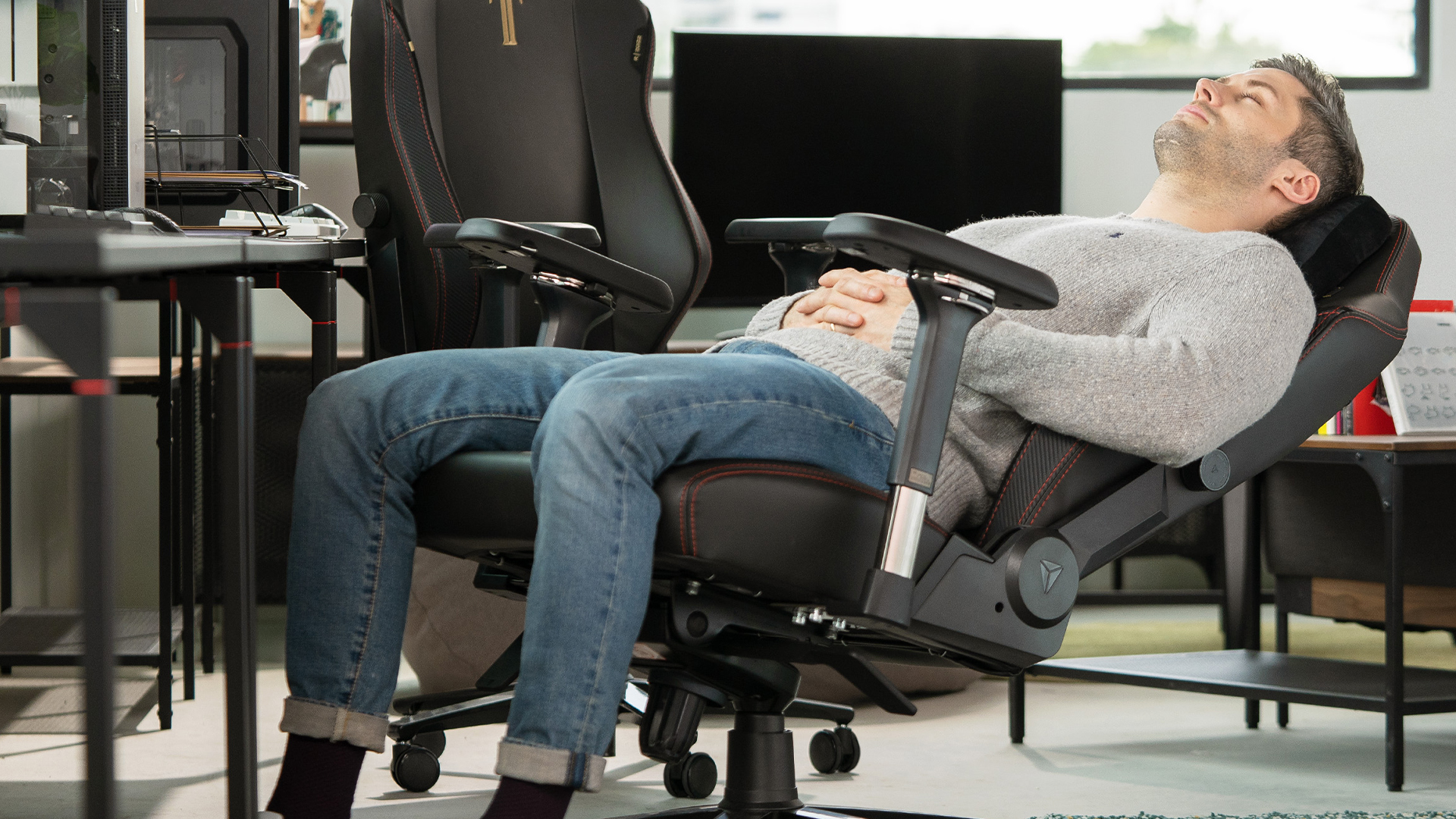
I've spoken with a group of certified ergonomists about what makes the best gaming chair and what annoys them the most about modern seats.
As PC gamers, we spend a lot of our time sitting on our collective bottoms. That’s just the way it’s always been. With the traditional keyboard and mouse control system (obviously the best control system) demanding some sort of desktop upon which to perch, it’s natural that we need to be sat at a desk.
And with the ever increasing amount of time we spend sitting at those desks—especially with the rise of working from home—it’s important that gamers have a comfortable and ergonomic place to park their derriere. And, because we’re special, that standard swivel chair you might have picked out of a skip, or at Ikea for a pittance, just doesn’t cut it, and so the gaming chair was born.
But is a gaming chair the right place to park it? The best gaming chairs offer a wealth of adjustable features and space-age materials all designed to keep you comfortable and keep your spine intact for a long gaming session. Yet outside of that you will find a ton of brightly coloured seats filled with cheap materials, that deliver almost no ergonomic benefits, all aiming to copy the style of Secretlab, Corsair, and AndaSeat.
I recently spoke to four ergonomists about gaming chairs, desks, and the ‘right’ posture (apparently there kinda isn’t such a thing) and specifically asked them whether there were features or design quirks that frustrated them about modern chairs, and especially gaming chairs.
“Yes, definitely!” Says Dr. John Gallucci Jr. “A few things stand out. Overbuilt ‘racing style’ designs: They look cool but often force your spine into unnatural positions with rigid side bolsters or bucket seats that don’t promote good posture.
“Fixed or exaggerated lumbar pillows,” he continues. “Not everyone’s spine is shaped the same! A giant pillow can push your lower back too far forward, causing discomfort instead of relief.”
Most of the experts I spoke to also said the same thing about form over function, with Dr. Gallucci noting that “RGB lights, flashy colors, or ‘wings’ on the headrest don’t make up for poor adjustability or lack of ergonomic support.”
As you might expect from an office/task chair manufacturer, Humanscale’s ergonomic expert, Jonathan Puleio, is more scathing. “Most chairs labeled as ‘gaming’ chairs are simply budget task chairs with colorful accent stripes.
“The backrest and seat pan are typically attached and non adjustable. If you are lucky enough to find a gaming chair that has a recline mechanism, it will likely have a back lock and a tension control knob. Most gaming chairs are severely lacking from an ergonomics standpoint. We recommend not falling for the marketing hype surrounding them.”
There’s a common misconception that ‘soft’ translates to ‘comfortable’.
Dr. Jordan Tsai
Kevin Butler, a professional ergonomist and senior wellbeing consultant at Steelcase, another of the best office chair manufactures, is more measured, though: “Many gaming chairs prioritize style over function—super stiff seats, fixed armrests, or exaggerated racing-style shapes that don’t actually support how people sit. Looking good means nothing if your back’s paying the price.”
Slightly countering that point about ‘stiff seats’, however, is Secretlab’s ergonomics advisor and esports physical therapist, Dr. Jordan Tsai: “There’s a common misconception that ‘soft’ translates to ‘comfortable’. But there are glaring issues with prolonged sitting on too-soft surfaces. For one, it increases the demand on the stabilizer muscles in your trunk area, which can lead to discomfort, and subsequently, fatigue.
“You can liken this to how your body has to work harder to balance on a soft foam surface (such as a bean bag) versus stable, hard ground. The uneven weight distribution on soft surfaces also increases the focal pressure at the point of contact. A reasonably firm surface is key to distributing the pressure exerted.”
This is the reason you’ll find the best gaming chair, the Secretlab Titan Evo, coming with a relatively hard seat. But as well as being ergonomically beneficial, Dr. Tsai also suggests that a stiffer seat material can actually be a benefit to competitive gamers.
“Another thing I really like about firmer seat bases is that you can sit on the front half of the chair and not feel like you’re falling off from it. This is a position I call ‘Active Posture’—I often recommend this to competitive gamers, which allows them to lean forward without compromising their lower back posture.
“I’d also personally always choose a strong foam-based seat over a mesh-based one. Foam gives more uniform support and allows for better weight distribution, even when sitting on a smaller surface area.”
What SHOULD you look for in a gaming chair?
These are the things that really get to the expert ergonomists in the industry, so what should you be looking for in your next gaming chair? Well, all of the people I spoke to said the same thing: You need a chair that supports movement.
“Look for a chair that keeps you supported and moving,” says Kevin Butler. “Long gaming sessions demand a seat that adapts to your body, not the other way around.”
And that’s what Secretlab’s advisor, Dr. Tsai notes, too. “You want a chair that gives you room to naturally move about and able to provide support for your body at the same time. Because when you’re able to shift and change your sitting position regularly, you will naturally adopt comfortable positions as needed.”
Puleio agrees, stating that: “Movement and postural variation are critical for maintaining long-term comfort and health. Consider chairs that have self-adjusting features such as weight sensitive recline mechanisms and form-sensing mesh.”
Long gaming sessions demand a seat that adapts to your body, not the other way around.
Kevin Butler
Dr. Gallucci, however, is more concerned with adjustability. “The most important thing to look for in a chair is ergonomic adjustability. A good chair should support your posture for long periods without causing discomfort or fatigue. That means it should allow you to adjust the seat height, seat pan depth, armrests, lumbar support and backrest tilt.”
“Because we’re all built differently,” agrees Dr.Tsai, “adjustments are key to tailoring the chair to best match your needs. That’s why it’s not just about whether they have certain features, but to what degree of adjustments said features actually give us.”
That’s what the experts recommend, and we’ve spent a lot of time testing different places to park our butts for a concerted gaming session to allow us deliver a definitive verdict on what the best gaming chairs are for your spine and your budget.






